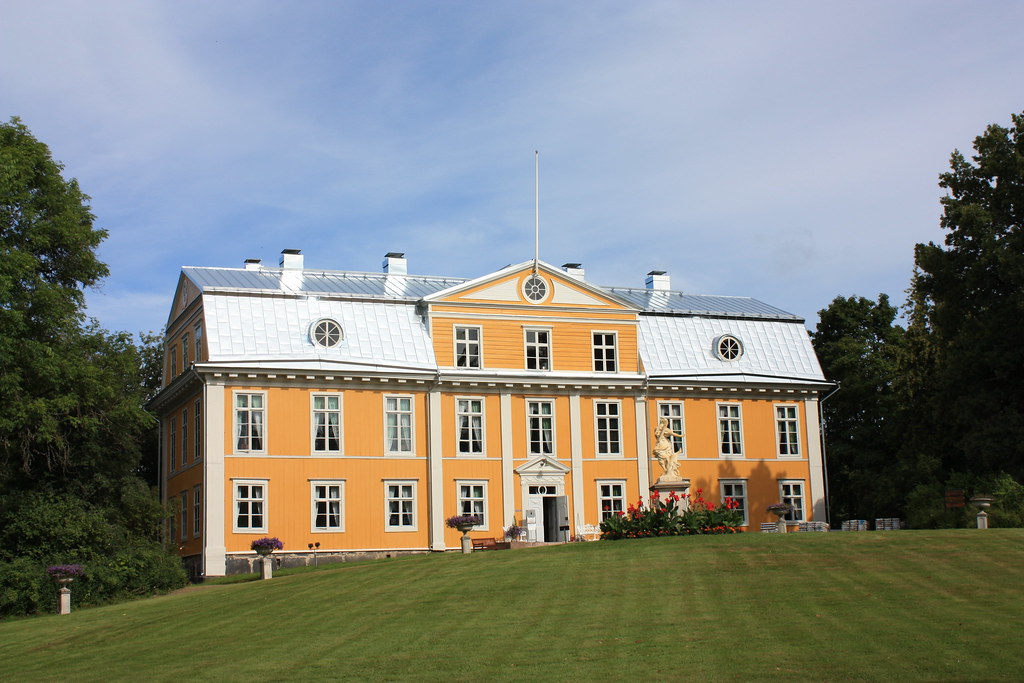Most charming manor houses in Finland
Finland has lot of manor houses founded during the centuries by noble families and industrial magnates. Today many of them host museums, spas and retreat centers. Here is the list of best manors where you can still feel the charm of past bourgeoisie.

Louhisaari Manor
Louhisaari manor castle was built in the late medieval ages by the remarkable Fleming noble family. The present main building was completed in the 1650s and represents the rare palatial architecture in Finland. The grounds have an extensive English-style park, complete with paths. Louhisaari belonged to the Fleming family for over three hundred years.
Read more about Louhisaari Manor
Haikko Manor
The history of the Haikko manor dates back to 1362 when a Dominican monastery owned the site. Jöns Olafsson Stenbock bought the manor and Haikko was a residence of Stenbock family for next 400 years. In 1871 it was bought by general Sebastian von Etter. Several members of the Russian Imperial family visited Haikko because von Etter was a close friend to czar Nicholas II.
Read more about Haikko Manor
Tuomarinkylä Manor Museum
The history of Tuomarinkylä Manor dates back to the 15th century. The present main manor house was built around 1790. Today the main building is a museum and there’s also a horse farm and restaurant.
Read more about Tuomarinkylä Manor Museum
Sjundby Manor
The history of the Sjundby manor castle dates back to year 1417. The present main building was built in the 1560’s by Jakob Henriksson. It was made of grey stone and had also a defensive purpose. Sjundby has been a residence for several noble families. The most well-known owner was Sigfrid Wasa, the daugher of the king Eric XIV.
Read more about Sjundby Manor
Mustio Manor
Mustio manor ("Mustio Castle", "Svartå Slott") was built in 1783-1792 by Magnus Linder, the owner of the local ironworks. There had been an older manor from the 17th century, but it was dismantled when the present one was built. The manor represents the neoclassical ("kustavilainen") architecture.Today Mustio is a countryside hotel.
Read more about Mustio Manor
Brinkhall Manor
Brinkhall manor house dates back to the 16th century. The current main building was built in 1793 and it was the first neo-classical manor house in Finland. It was designed by Gabriel von Bondorff. The interior is from 1920s. Brinkhall is also known as remarkable gardens.
Read more about Brinkhall Manor
Vuojoki Mansion
The manor house of Vuojoki is one of the most beautiful empire mansions in Finland. Vuojoki is mentioned in historical documents in the 16th century. First manor was established in 1626 by Gottfrid von Falkenberg.Vuojoki Mansion did not really flourish until the 1830s, when captain Lars Magnus Björkman (ennobled in 1834 Björkenheim) bought it.
Read more about Vuojoki Mansion
Laukko Manor
The written history of Laukko manor dates back to year 1416, but according the folklore the local chieftain Matti Kurki received it as a manor from the king of Sweden in the 13th century. The most famous of the medieval lords of Laukko was Klaus Kurki, the tragic hero of a ballad called The Death of Elina.
Read more about Laukko Manor
Kuitia
Kuitia is the oldest remaining manor house in Finland. It was built of stone probably in 1480s by noble Joachim Fleming. There has been a manor house in same location from the beginning of the 15th century.
Read more about Kuitia
Suitia Manor
The first record of Suitia (Svidja) is from the year 1420. First known owner was Björn Ragvaldsson, the judge in the Raasepori. After him Fleming family started to use Suitia as their secondary residence. The third owner, Erik Fleming was a remarkable Councilor of State of Sweden. He fought succesfully against Danish army and drove them away from Finland in 1523.
Read more about Suitia Manor
Kankainen Manor
Earliest record of the manor in Kankainen dates back to 1346, when there were at least two buildings in the village. First manor was built in the 15th century by Klaus Lydekesson Diekn, the commander of Turku castle.
Read more about Kankainen Manor
Malmgård Manor
Malmgård is one of the most magnificent manor houses in Finland. The history began in 1606 when Carl IX of Sweden donated 30 local farms to Estonian war widow Catharina Hess von Wichdorff.
Read more about Malmgård Manor